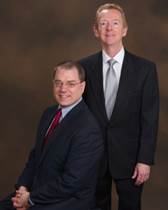Want the latest retirement plan adviser news and insights? Sign up for PLANADVISER newsletters.
Should You Offer Special Education for Sector or Specialty Funds?
Demographics, menu composition and allocation patterns are important determinants of education needs.
What types of funds are we talking about? Primarily, we’re thinking of investments with concentration risk, such as real estate, technology, high-yield, emerging markets (EM), metals, or other funds exposed to non-systematic risk. These sorts of funds can be beneficial building blocks in portfolio construction, but can present undesirable levels of risk when over utilized.
How do you know if you have a problem? Most plan recordkeepers can provide reports showing allocation patterns. A plan with high utilization of asset allocation models or with a high average number of funds per participant may be less in need of special education than one with a high number of participants concentrated in the plan’s high-volatility funds.
One of the tools we provide to plan participants is a table showing the available menu options, ranked by volatility (we use three-year standard deviation for this purpose)—the higher on the page, the higher the historic volatility. It’s a quick visual that helps self-allocators get an idea of where their picks lie on the risk scale. Naturally, volatility is just one of the risks investors face, but it’s an important one because of the propensity of individual investors to make emotionally-driven decision errors.
While general education about diversification is important, we don’t want a participant to think they have successfully managed their risk by spreading their balance equally between a gold fund, a real estate fund and a technology fund.
Another area where special education may be beneficial is with target-date funds. It’s true they are diversified, self-adjusting and designed to be age-appropriate, but how well are their risks understood? Ranking target-date funds on a simple, visual risk scale could be valuable educational content.
Many people would consider a well-diversified 60/40 allocation to be of “moderate” risk, and that corresponds generally with the composition of a 2020 to 2025 target-date fund. Longer-dated funds are more aggressive, and vice versa. A 25-year-old being defaulted into a 2055 fund might find it useful to know it may consist of 85% to 100% equities, which would be considered an “aggressive” investment mix.
A pre-retiree might find it useful to know a typical 2015 fund might contain 35% to 50% stocks. For today’s retirees, longevity risk may be more troublesome than a bit of market volatility, and specialized education can help them make their allocation decisions with their eyes open.
If a menu contains longer-duration bond funds, special education might be appropriate to show employees the amount of risk to their principal rising interest rates may pose. By extension, shorter-dated target-retirement funds have duration risk that could be covered in an education initiative.
All employee education should be thoughtful, targeted and needs-based. Special education based upon a plan’s investment menu is no exception. Employee Retirement Income Security Act (ERISA) attorneys would probably tell you there is a liability management aspect to investment education. We don’t disagree, but more importantly, better retirement outcomes will be achieved as the result of employees being equipped to make better-educated decisions.
Jim Phillips, President of Retirement Resources, has been in the investment industry for more than 35 years, the past 18 of which have been focused in the area of qualified retirement plans. Jim worked for major national investment firms for 14 years before “going independent” in 1990. Jim is an Accredited Investment Fiduciary, has contributed to two books on 401(k), and his articles have been published in Defined Contribution Insights, PLANSPONSOR’s (b)lines and ASPPA’s 403(b) Advisor, and Jim is a RetireMentor on MarketWatch.com. His work has been acknowledged with multiple Signature Awards from the PSCA, he has been named to the 2012 and 2013 list of Top 100 Retirement Plan Advisers, by PLANADVISER Magazine, and he was a finalist in 2012 for the Morningstar/ASPPA 401(k) Leadership Award. Jim has been a frequent speaker at national conferences, including SPARK, ASPPA, AAO and the PLANSPONSOR and PLANADVISER National Conferences.
Patrick McGinn, CFA, Vice President of Retirement Resources, is a CFA charterholder and has been in the securities industry since 1993. In addition to the Chartered Financial Analyst designation, he is an Accredited Investment Fiduciary and a member of the Boston Security Analyst Society. Together with Jim, Patrick has co-authored a number of articles which have been published in industry publications on topics about managing successful 401(k) and 403(b) plans. His work has been acknowledged with multiple Signature Awards from the PSCA, and he has been named to the 2012 and 2013 list of Top 100 Retirement Plan Advisors, by PLANADVISER Magazine. He was a finalist in 2012 for the Morningstar/ASPPA 401(k) Leadership Award.
NOTE: This feature is to provide general information only, does not constitute legal advice, and cannot be used or substituted for legal or tax advice.
You Might Also Like:

Mariner Announces Financial Wellness Platform Following Spring Acquisition

October Three Consulting Acquires Retirement Learning Center

